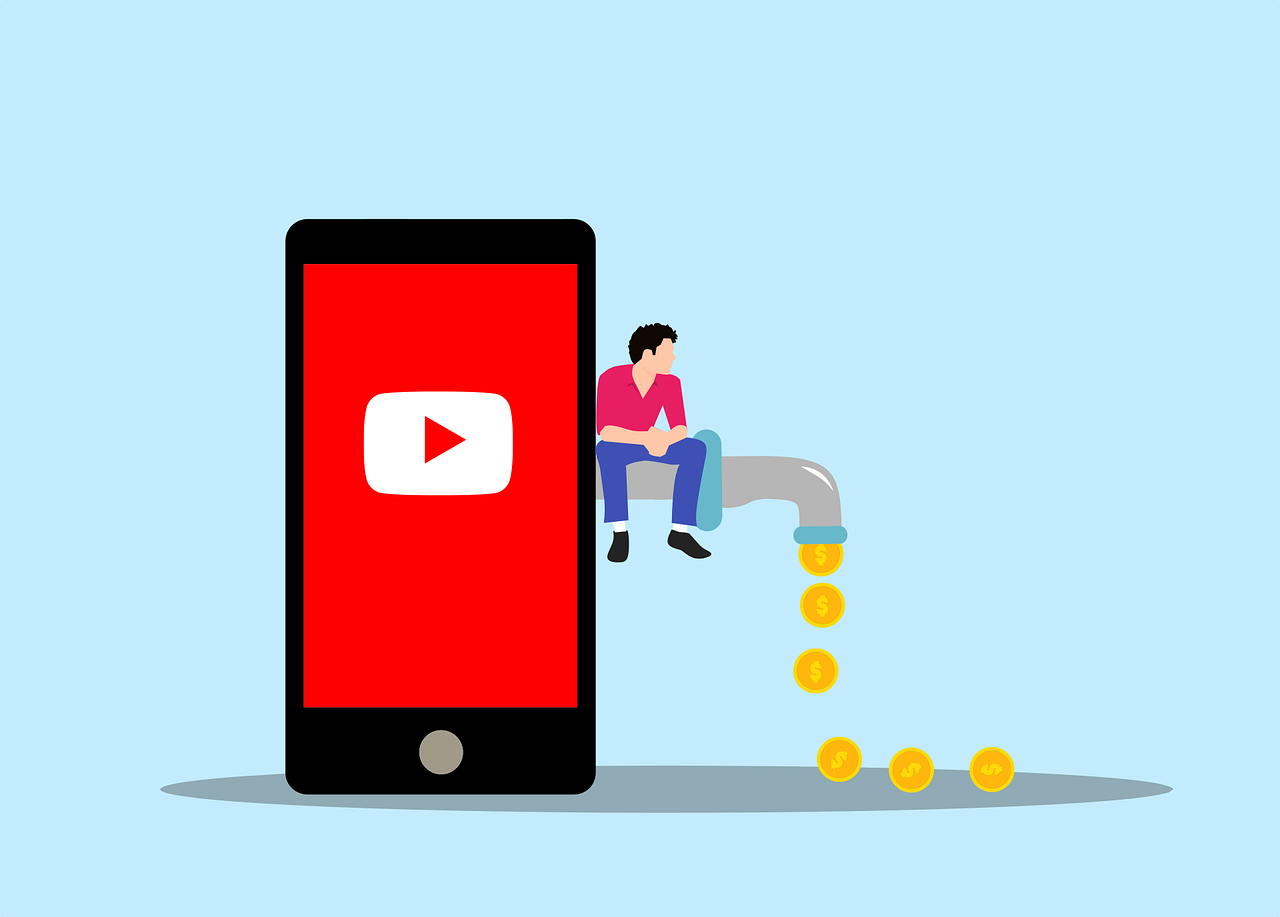Complete Guide on How to Start a YouTube Channel

Starting a YouTube channel can be an exciting and rewarding endeavour. Whether you're passionate about sharing your knowledge, showcasing your creativity, or building a community around a particular interest, YouTube offers a platform for you to reach a global audience. This comprehensive guide will walk you through everything you need to know to launch and grow your own YouTube channel.

Step 1: Define Your Channel Concept
Choose a Niche
When choosing a niche for your YouTube channel, it's important to consider several factors:
- Passion: Select a niche that aligns with your interests, hobbies, or expertise. Creating content about topics you're passionate about will help you stay motivated and engaged in the long run.
- Audience: Think about the audience you want to target with your channel. Consider their demographics, interests, and preferences. Understanding your audience will help you tailor your content to meet their needs and preferences.
- Differentiation: Research other YouTube channels within your chosen niche to identify gaps or opportunities for differentiation. Find a unique angle, perspective, or niche within your broader topic to stand out from the competition.
Step 2: Plan Your Content Strategy
Content Ideas
Generating content ideas is essential for keeping your channel fresh, engaging, and relevant. Here are some tips for generating content ideas:
- Research: Explore popular YouTube channels and trending topics within your niche for inspiration. Look for content gaps or areas where you can provide unique value to your audience.
- Trends: Keep an eye on industry trends, news, and events related to your niche. Incorporating timely topics into your content can help attract new viewers and keep your existing audience engaged.
- Variety: Experiment with different types of content formats, such as tutorials, reviews, vlogs, interviews, or behind-the-scenes videos. Offering a variety of content will appeal to a broader audience and keep your channel interesting and dynamic.
Content Calendar
Creating a content calendar will help you stay organized, consistent, and strategic with your content creation efforts. Consider the following when planning your content calendar:
- Consistency: Establish a regular upload schedule that works for you and your audience. Consistency is key to building momentum, retaining viewers, and growing your channel.
- Balance: Strive for a balance between evergreen content that remains relevant over time and timely content that addresses current trends or events. This balance will help you attract new viewers while also providing value to your existing audience.
- Flexibility: While it's essential to plan your content in advance, allow room for flexibility and spontaneity. Be open to adjusting your content calendar based on feedback from your audience, changes in industry trends, or unexpected opportunities that arise.
Step 3: Set Up Your YouTube Channel
Create a Google Account
Creating a Google account is the first step to accessing YouTube's features. If you already have a Google account, you can use it to sign in to YouTube. If not, you'll need to sign up for one.
Customize Your Channel
Channel Name:
Choose a memorable and descriptive name for your channel. Make sure it reflects the content you plan to create and is easy for viewers to remember.
Channel Art:
Design eye-catching channel art, including a banner and profile picture. Your channel art should reflect your brand and give viewers a glimpse of what they can expect from your channel.
Channel Description:
Write a compelling channel description that introduces viewers to your content. Describe what your channel is about, what types of videos you'll be posting, and what viewers can expect to learn or experience by watching your videos.
Optimize Your Channel
Keywords:
Use relevant keywords in your channel name, description, and tags to help your channel appear in search results. Think about the terms your target audience might use to find content like yours and incorporate those keywords strategically.
Branding:
Maintain consistent branding across your channel by using the same colors, fonts, and imagery in your channel art, thumbnails, and video intros. Consistent branding helps viewers recognize your content and builds trust in your brand.
Links:
Add links to your social media profiles, website, or other online platforms where viewers can connect with you outside of YouTube. This gives viewers additional ways to engage with your content and stay connected with your brand.
Step 4: Create High-Quality Content
Equipment
Invest in the right equipment to create high-quality videos. This typically includes:
- Camera: Choose a camera that produces clear, high-definition footage. Many YouTubers use DSLR cameras or mirrorless cameras for professional-looking videos.
- Microphone: Good audio quality is essential for keeping viewers engaged. Invest in a quality microphone to ensure clear sound in your videos.
- Lighting: Proper lighting can make a big difference in the overall look of your videos. Invest in softbox lights or LED panels to illuminate your filming space evenly.
Filming and Editing
Script:
Plan your video content in advance by creating a script or outline. This helps you stay organized and ensures that your videos have a clear structure and flow.
Filming:
When filming, pay attention to factors like framing, composition, and camera angles to create visually appealing shots. Consider using techniques like B-roll footage and camera movement to add interest to your videos.
Editing:
Use video editing software to edit your footage and create polished final videos. Editing allows you to trim out any mistakes or unnecessary footage, add transitions and effects, and enhance the overall visual and audio quality of your videos.
Step 5: Upload and Optimize Your Videos
Title and Thumbnail
- Title: The title of your video is crucial for attracting viewers and ranking in search results. It should be descriptive, attention-grabbing, and contain relevant keywords. Make sure it accurately represents the content of your video.
- Thumbnail: Custom thumbnails are like the cover of a book – they should be visually appealing and entice viewers to click. Design eye-catching thumbnails that accurately represent your video content and stand out in search results and recommended videos.
Description and Tags
- Description: The video description provides additional context about your video and helps YouTube understand its content. Write detailed descriptions that include relevant keywords, links to related content or resources, timestamps for different sections of the video, and calls to action (CTAs) prompting viewers to subscribe, like, comment, or visit your website.
- Tags: Tags are keywords or phrases that help YouTube categorize and recommend your videos. Use relevant tags that accurately describe your video content and include variations of keywords related to your niche. Tags can include specific topics, keywords, and phrases that potential viewers might search for when looking for content similar to yours.
Engage with Your Audience
- Comments: Engaging with your audience in the comments section is essential for building a community around your channel. Respond to comments, answer questions, and acknowledge feedback from your viewers. This interaction fosters a sense of connection and loyalty among your audience.
- Calls to Action: Encourage viewers to take action by including calls to action (CTAs) in your videos. Ask viewers to like, comment, share, and subscribe to your channel. You can also prompt them to visit your website, join your email list, or follow you on social media for additional content and updates.
Step 6: Promote Your Channel
Share on Social Media
- Platforms: Share your videos on various social media platforms such as Facebook, Twitter, Instagram, LinkedIn, and Pinterest. Tailor your messaging and content to each platform's audience and format to maximize engagement and reach.
- Communities: Join online communities, forums, and groups relevant to your niche and share your videos where appropriate. Participate in discussions, provide value, and build relationships with community members. Avoid spamming or self-promotion, and focus on contributing meaningfully to the community.
Collaborate with Others
- Collaborations: Collaborate with other YouTubers or content creators in your niche to reach new audiences and cross-promote each other's channels. Consider partnering on joint projects, guest appearances, interviews, or collaborative videos that offer mutual benefits and value to both parties.
- Guest Appearances: Be a guest on podcasts, YouTube channels, or live streams hosted by other creators in your niche. This exposes you to a new audience and allows you to share your expertise, insights, and personality with a broader audience. Prepare engaging content and make a positive impression to encourage viewers to check out your channel and subscribe for more content.
Step 7: Analyze and Improve
Analytics
- Metrics: Utilize YouTube Analytics to track important metrics such as views, watch time, subscriber count, audience demographics, and engagement rates.
- Insights: Analyze the data to gain insights into what content resonates most with your audience, which videos perform best, and where there may be room for improvement.
- Optimization: Use the insights gained from analytics to refine your content strategy, optimize video titles, thumbnails, descriptions, and tags, and experiment with different approaches to see what yields the best results.
Feedback
- Listening: Pay attention to feedback from your audience through comments, likes, dislikes, and direct messages. Take constructive criticism into account and use it to improve your content.
- Experimentation: Be open to trying new things and experimenting with different types of content, formats, and styles. This can help you keep your channel fresh and adapt to changing audience preferences.
- Iterative Improvement: Continuously iterate on your content based on feedback and analytics, making incremental improvements over time to better serve your audience and achieve your channel goals.
Starting and growing a YouTube channel is a journey that requires dedication, creativity, and perseverance. By following the steps outlined in this guide and consistently applying yourself to creating high-quality content, engaging with your audience, and refining your approach based on feedback and analytics, you can build a successful YouTube presence.
Remember that success on YouTube doesn't happen overnight. It takes time to find your voice, develop your style, and build an audience. Stay patient, stay authentic, and stay committed to providing value to your viewers.
Ultimately, the key to success on YouTube lies in your ability to connect with your audience, provide them with content that resonates with their interests and needs, and foster a sense of community around your channel. Keep learning, keep growing, and keep striving to improve, and you'll be well on your way to building a thriving YouTube channel.





